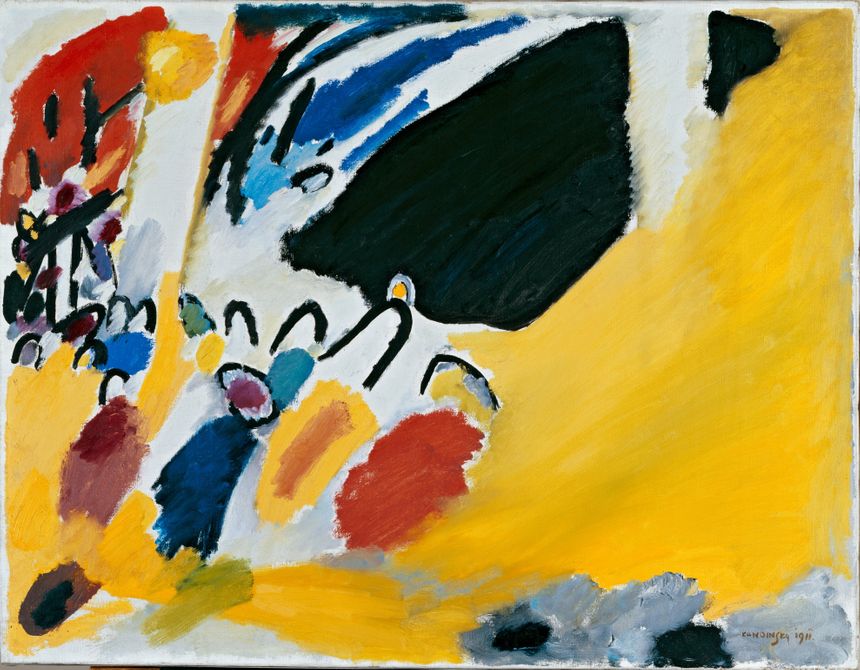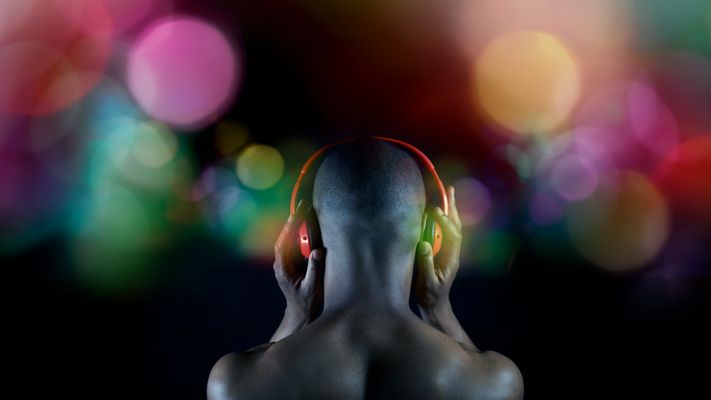Imagine seeing colours when you hear music! Vincent Van Gogh, Franz Liszt, and Duke Ellington are but some of the many artists known to have had synaesthesia… But what exactly is this mysterious condition?
Music and colour are inextricably linked, two senses often united in a variety of ways. For some, however, these senses can result in one singular and personal experience, known as synaesthesia, derived from “syn” and “aesthesis” meaning “together” and “sense”. The condition stems from the stimulation of one of the various senses and results in an automatic and involuntary stimulation of a second sense (colour from sound, taste from words, colour from numbers…).
With more than 80 different known types of synaesthesia affecting over 4% of the population – left-handed individuals in particular – it is difficult to describe all the possible varieties. Many synaesthetes, however, are born with the variance known as chromesthesia. This results in specific sounds, pitches and timbres generating corresponding colours and textures in the field of vision (or, as some describe it, in the “mind’s eye”).
Recent studies have shown that people with chromaesthesia are drawn to artistic activities, and though difficult to prove, many renowned artists are confirmed syaesthetes, or likely to be or have been : Baudelaire, Rimbaud, Matisse, Nabokov, Van Gogh, Stevie Wonder, Billy Joel, Duke Ellington, Eddie Van Halen, Pharell Williams, and Kanye West. Several classical composers and musicians have also confirmed or evoked symptoms of synaesthesia, in some cases unknowingly revealing their condition through their writings – as Alexander Scriabin, Franz Liszt, Jean Sibelius, György Ligeti, Nikolai Rimsky-Korsakov, Itzakh Perlman, Olivier Messiaen, and Leonard Bernstein to name but a few.
Acknowledgement of the existence of synaesthesia goes back to the late 17th century, though it was not until the 19th century that scientists truly began examining a condition hitherto unproven and widely discredited. Such scientific interest arose from a broader fascination for multi-sensory experiences, combining the senses in the search for more powerful and emotionally engaging artistic creations (as in the case of Wagner’s 19th-century Gesamtkunstwerk: an all-embracing, multi-disciplinary ‘total art work’).
How the condition manifests is entirely personal, and though a person with chromesthesia will always see the same colours according to specific sounds, these colours differ from one person to another, making any comparative study and overall understanding extremely difficult. Whereas Ligeti saw major chords as a shade of red and pink, and minor chords a shade of green and brown, Rimsky-Korsakov saw major chords such as C Major as white, and B Major a dark metallic blue. As for Duke Ellington, chords on the note D evoked a dark blue burlap and, on the note G, he had a glimpse of a light-blue satin.
Music and colour, an age-old friendship
Music itself has been forever linked to colour in intangible ways: for example, Sir Isaac Newton hypothesised that sounds and colours shared corresponding frequencies. Colours are often used to describe certain musical works and even genres, such as Gershwin’s Rhapsody in Blue (and the blues genre in general); music is even often described as being “bright”, “light” or “dark”. Even in music theory, terminology is often derived from the realm of colour, such as the chromatic scale, from the Greek khrōma meaning colour…
A majority of listeners will, in general, associate higher pitches with brighter and lighter colours, and lower sounds with sombre and darker tones. At such a basic level, this may be indicative of a common association, present in the majority of adult minds, between sound and colour. Instrumental timbres are also commonly and unconsciously associated with colour hues, such as brass instruments with rich “warm” colours and woodwinds with more natural “pastoral” colours.
Painting with sound or composing with colour?
Leonard Bernstein once claimed that “a composer of symphonies has all the notes in the rainbow before him”. But does knowing that a composer is (or was) a synaesthete invite new interpretations and analyses of their music? Whilst it may be a stretch to say that these musicians “compose with colour”, a composer’s synaesthesia unquestionably becomes part of their idiolect, their unique language. Examining a composer’s own comprehension and “usage” of their synaesthesia allows us to go deeper in the understanding of certain works and the style of their composition.
The Hungarian composer-pianist Franz Liszt undoubtedly raised eyebrows when during a rehearsal in 1842 he asked the Weimar orchestra to perform “a little bluer, if you please” and “not so rose”. Richard Wagner, another suspected synaesthete, is said to have once abruptly walked out on a rehearsal of “Tristan und Isolde“, claiming that the colours were simply “wrong“.
Whereas certain composers kept their synaesthesia at bay from their music, for others the condition became essential to their artistic identity. Olivier Messiaen saw colours when listening to birdsong, an element that fascinated the French composer; interestingly, the colours evoked by his condition upon hearing birds would often correspond with the colours of the plumage. As the composer himself so perfectly put it in conversation with Claude Samuel, “I do indeed try to translate colours into music”. He even used colours as indications in his music, in the hopes of transmitting his own internal sensations.
Another artist believed to have a strong synaesthetic sensibility, Alexander Scriabin was particularly preoccupied with creating meaningful colour associations. He even developed a colour organ he called Tastiera per Luce (‘keyboard of lights’), designed solely to accompany a work visually and emit specific lights and hues which characterised the narrative. His work Prometheus: The Poem of Fire, featuring the Luce keyboard, is an emblematic example of the instrument’s usage: Scriabin believed that “colour underlines tonality; it makes the tonality more evident”.
What about art?
Exploring the links between sounds and colours is not the exclusive domain of composers and musicians. Painters were equally fascinated by such sensations, and none more so than the Russian Wassily Kandinsky. The painter and cellist is said to have been a synaesthete, allegedly discovering his condition whilst at a performance of Wagner’s Lohengrin in Moscow. Synaesthete or not, he undoubtedly exhibited a relentless fascination for the meeting point between these two sensory experiences, trying to capture musical elements in his paintings, naming his works “Compositions”, “Improvisations”, and “Impressions”. Amidst numerous examples, his work Impression III (1911) displays this fascination perfectly, painted after the artist attended a concert of Arnold Schoenberg in Munich.

More recently, certain painters with synaesthesia have taken to painting visual renditions of their own chromesthetic experiences of various 20th-century jazz, rock, and pop music. The painter Melissa McCracken has painted a variety of songs, from Stevie Wonder and David Bowie to Radiohead, Etta James and J. S. Bach (seen below). Another reminder that the combinations of colour and music spectrums are limitless.

Source: Seeing is hearing – what are synaesthesia and chromesthesia?













